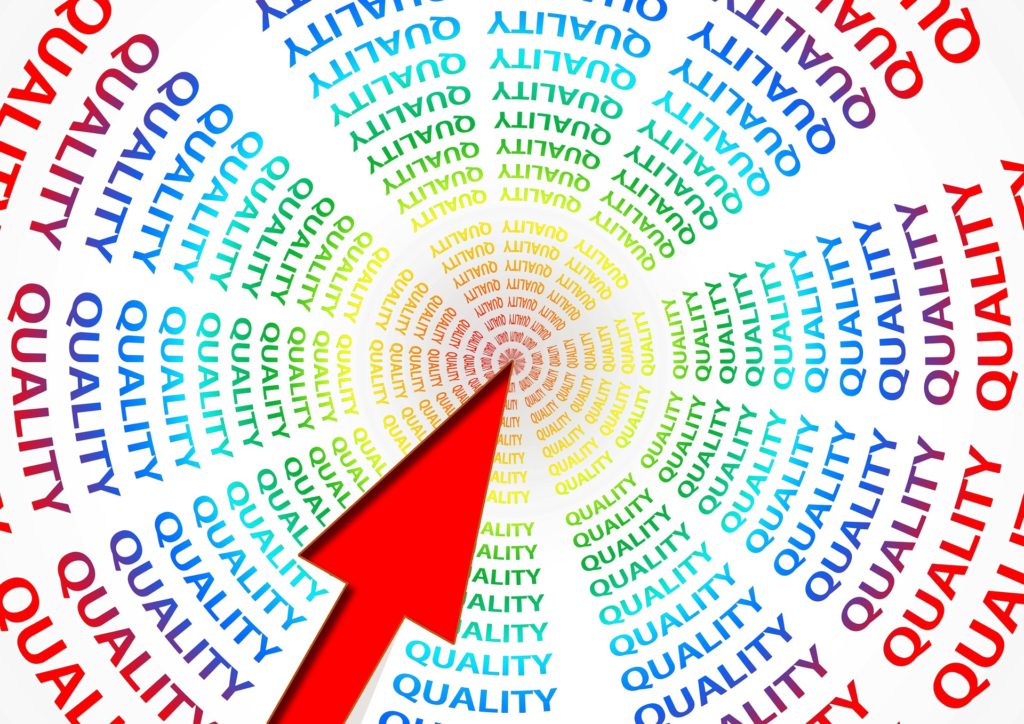Tag: Business Process Assessment
Here’s why your EHR doesn’t work
Tell me about your processes
 “I hope you’re not going to show me a bunch of flowcharts. At the last place I worked, they flowcharted everything.” Thus spoke a client in a consultation about his troubled EHR (electronic health records) project. It wasn’t difficult to figure out where the project went off track; it was doomed from the beginning.
“I hope you’re not going to show me a bunch of flowcharts. At the last place I worked, they flowcharted everything.” Thus spoke a client in a consultation about his troubled EHR (electronic health records) project. It wasn’t difficult to figure out where the project went off track; it was doomed from the beginning.
My inner Jeff Lebowski wanted to shout, “Dude! You didn’t map your processes. No wonder your EHR doesn’t work.” Process mapping should have taken place long before my client began discussions with vendors. The RFP should have included process maps so the bidding vendors would have had a clear understanding of what they were required to build.
Map your processes!
Let’s take a look at a high-level process diagram for an outpatient behavioral health clinic. This is one possible workflow map, but every organization is different. The level of detail your mapping reaches depends on your business requirements, but it is reasonable to contemplate and document field-level requirements before beginning your procurement process. For instance, do you need a field that identifies whether a client contact was by phone or in-person? If you don’t proactively account for every component, it may be too late for an optimal solution once implementation has begun.
Design thinking
My wife has been looking for a pair of red shoes for three years. Not just any red shoes — they must meet very specific requirements. They must have high heels and pointy toes, they must be comfortable enough to wear all day, and they should be a specific shade of red leather. They must also match clothing already in her wardrobe. Brand doesn’t matter, and the ideal price would be in the low-medium three-figures. She has designed them in her mind, but she hasn’t been able to find them in a store yet. Shoes are a big deal, so it’s a complicated process.
Shopping for enterprise software isn’t so different from getting the perfect pair of red shoes. Envision what the ideal software application will look like before you even begin shopping, and design it together with your team. Evaluate and document all the processes from initial client contact through discharge. What happens at every step? What are the inputs and outputs for each process? Do you need a screen that replicates a face sheet? What does a billable progress note look like, and how will it link to the practice management (PM) system? What will all the reports and other outputs look like? Does it have to interface with existing applications and processes?
Design team
At a minimum, your “design” team should consist of clinicians, billing professionals, other subject matter experts and possibly legal counsel. Depending on how your applications are supported, you might want to invite IT. However, allowing IT to manage the design and process mapping is a big mistake since they are unlikely to understand the clinical nature of the project.
Does this all sound expensive and time-consuming? I can assure you that a failed EHR implementation is far more expensive. Eight- and nine-figure failures are not unusual, and years can be wasted until organizations are willing to say uncle and admit they got it wrong.
Plan to maximize revenue
Another critical exercise is the development of a catalog of services aligned with both customers and payers. For instance, if the majority of your clients are covered under Medicaid, the services offered should align with how Medicaid pays for those services. Unless you are in the charity business, you can’t afford to offer services for which you will not be paid.
Many organizations are able to significantly increase revenue and decrease denials by carefully evaluating their business processes at this stage.
Staffing
How will staffing be affected by your new system? You may need more or less staff, or may need different skills once your new system is in place.
Plan for quality and compliance
Quality assurance (QA) and regulatory compliance must be built into the system at the design/conceptual stage. We learned from W.E. Deming that it is too late to build quality into a product once the plans are partly in place. Therefore, compliance, QA, and privacy and security must be considered at the design/process mapping phase.
Root causes of failure
Success with an EHR or any other type of enterprise project is neither accidental nor mysterious. One root cause of EHR project failure is invariably failure to understand and account for organizational business processes. Hubris is another root cause of project failure, and the vast majority of the time — 94%, according to Deming — these sorts of failures are failures of management. The crisis of management is not a mystery either, and Harvard Business Review provides a good discussion on the subject.
Don’t fear the flowchart!
© Copyright Jeffrey Morgan, 2016
This article first appeared on cio.com at: http://www.cio.com/article/3138958/software/heres-why-your-ehr-doesnt-work.html
Introduction to Enterprise Procurement Projects – Part 3 – The Business Process Assessment
What is a Business Process Assessment?
Now that you have established preliminary Goals, Objectives and Criteria for Success for your enterprise project, it is essential to conduct a Business Process Assessment to identify the actual business practices in your organization. When I refer to a Business Process Assessment, I am talking about a comprehensive, objective, and assumption-free evaluation of all the activities, processes, procedures and personnel involved in the production of a specific product such as a payroll run, an accounts payable run, or an AR billing cycle, to name just a few.
An Example
Let’s use payroll as an example. An appropriate assessment might begin with a new pay period and should include the examination of all the tasks, steps, people, processes, procedures and paperwork involved in payroll production. How do departments report time to the payroll office? Is it paper based or automated? How much does it cost your organization to produce a payroll check? How many people are involved? How is the payroll produced? Is all the work done in a single system? Are there spreadsheets and exceptions involved? What reports are produced monthly, quarterly, annually? Are there bottlenecks? Excessive mistakes? Recurring problems? Regulatory compliance issues? Problem departments? Problem people?
Do you really know what your process are?
You might think you already know all this and you feel you have a solid understanding of how all your departments conduct business. It is often the case at this stage that executives and managers explain to me what they truly believe to be their business practices and processes. These descriptions are frequently completely wrong.
It is difficult to evaluate new systems if you don’t truly understand your current systems. With systems and staff members that have been running unchallenged and unchanged for decades, staff members, supervisors and managers often perform tasks without questioning the underlying processes. A thorough Business Process Assessment identifies and documents all these processes and establishes a baseline for your current business performance.
Getting Started
Surveys, either paper-based or electronic are a good tool with which to begin but they are no substitute for direct observation and interviewing staff in each department. One possible approach to conducting a system-wide assessment might be to disseminate surveys first and then conduct department level interviews as the next step.
The final product of the Business Process Assessment should be a detailed report describing current, identified practices, processes and problems. This report should also include suggestions and recommendations for improving the processes going forward.
You may find it difficult to perform an accurate assessment using internal staff. Regardless of how well-intentioned, smart and motivated they are, organizational culture, biases, and assumptions are likely to be an obstacle and the objectivity may suffer. If you would like to discuss any aspects of your Business Process Assessment, or any other part of your enterprise project, send me an e-mail at jmorgan@e-volvellc.com.
Copyright © Jeffrey Morgan 2016
Reduce the Cost of your operations by improving Quality: William Edwards Deming and Quality Management in a Public Sector Organization
If you improve the quality of your product or service, productivity is automatically increased and costs go down.
I first learned about W.E. Deming while I was in graduate school and also working in the Product Engineering department of a Fortune 500 company. At the time, the company was implementing Total Quality Management (TQM) and I was really impressed by the scope of changes the company was employing in order to improve its product quality.
Deming’s approach to quality and productivity is widely used in manufacturing, but not so well recognized in the Public Sector where I do a lot of my work. However, applying Deming’s concepts and methods to Public Sector organizations can create a profound improvement in the quality of that service while automatically improving productivity and lowering costs.
Combine with a Business Process Assessment
Any time you are working on a business project such as procurement of a new software product, a perfect opportunity to review and streamline all your business processes presents itself. In fact, this may be the only opportunity you have to make improvements in the delivery and efficiency of services for the next decade or two if your organization functions like many in the Public Sector do. There is no software product that will magically improve your business processes – you must analyze the business processes and build your new, improved processes into your new system.
A business process assessment in advance of your upcoming software acquisition can identify the bottlenecks in your business processes that create inefficiencies in your operations. I can provide a few of the many examples that I have encountered with my clients. In one organization, I found a 10-step process for recording of revenue that resulted in a 3 month delay in that revenue being booked. This process should have consisted of a single step with instant booking of the revenue. While doing a business process review in another organization, my client identified a 17-step process that resulted in a lengthy delay in booking revenue and sometimes in the total loss of that revenue. Again, that process should have consisted of a single step.
Bureaucratic Obstacles
Is your organization plagued with bureaucratic processes like those mentioned above? No one knows why the process is that way and no one can remember when it started, but “We’ve just always done it that way.” This is the reason why I do a bottom-up business process assessment. There is no way to capture these processes unless you interview and observe the people who actually do the work. The gulf between Minion and Management is vast and Management often has no idea of what the exact processes are in various departments and functions of a large organization.
Once you identify all of these process bottlenecks, you will want to make sure you build the new, more logical and efficient process into your new software system. Unfortunately, many organizations do what a colleague of mine describes as “recreating all the dysfunctional processes in the new system.” If you are going to take that approach, why bother with a new system?
If you want to read more about improving quality and productivity while lowering costs, try Out of the Crisis by William Edwards Deming (1982, Massachusetts Institute of Technology, Center for Advanced Educational Services, Cambridge, Massachusetts). If you want to discuss methods for increasing the quality of your services, e-mail me at jmorgan@e-volvellc.com.
Copyright © Jeffrey Morgan 2015






Recent Comments